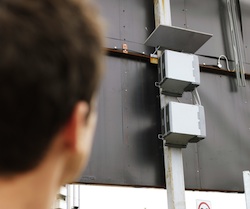The small cell market is set to put a disappointing 2013 behind it by experiencing growth of 65 percent by the end of this year, according to new research from Infonetics.
A new report found the expected ramp up in activity during the past 12 months did not happen, as operators instead chose to continue to test the technology and only deploy in “modest” volumes. In total, 642,000 units were sold during 2013, the majority of which were 3G. Revenue in the sector was €557 million last year, compared to the €17.3bn 2G and 3G RAN market.
However, researchers said they expected volumes to grow in earnest during 2014. The driving forces in this trend are countries that already have a strong macrocellular network presence such as the UK, US, Japan and South Korea. The main driver of this growth will be 4G metrocells, which will close the gap on deployment of 3G products.
Richard Webb, Directing Analyst for Mobile Backhaul and Small Cells and co-author of the report, said: “The need to enhance existing saturated macrocellular networks that are struggling to maintain a decent mobile broadband experience, as well as to add capacity to existing LTE networks, is bringing some fuel to our forecast. And consequently, we expect the small cell market to grow.”
The report found that the long-running issue of backhaul was no longer a major inhibitor to small cell deployment. However, it could prove an obstacle for some operators looking to deploy in certain areas.
Looking further ahead, Infonetics found that 5G would boost the market further. Japanese mobile provider NTT DOCOMO recently announced it intends to have 5G available in time for the 2020 Tokyo Olympics.



